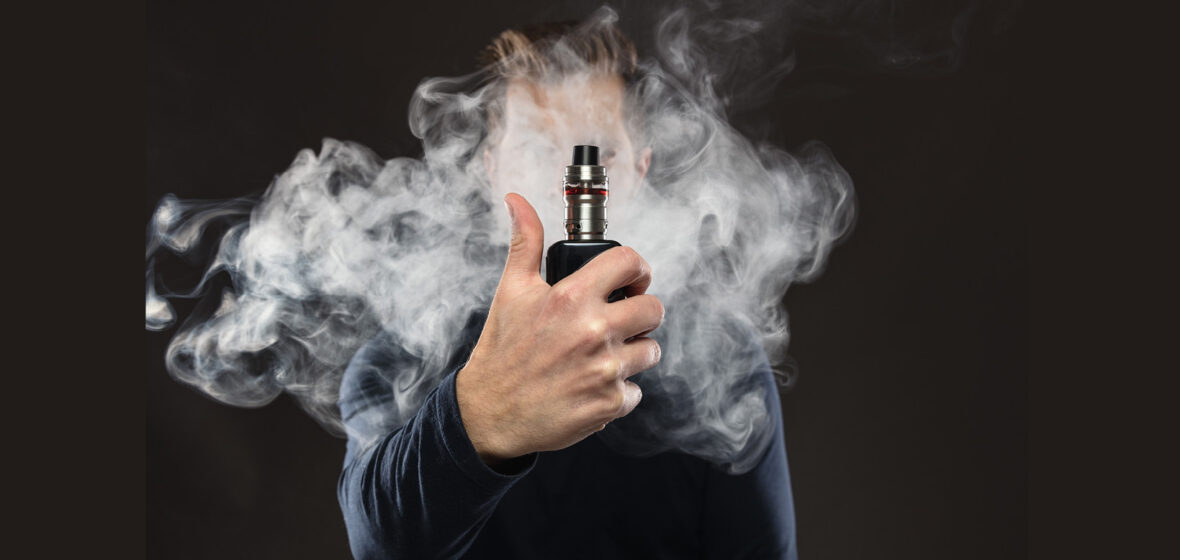Young people are particularly susceptible to the lure of vaping products. Victorian health organisations have called on the federal government to make laws restricting their sale, given their harmful effects on health.
There is a great need for border laws policing internationally imported vaping products that are mislabelled and pose a health hazard – and young Australians are disproportionately affected.
NSW has a retail licensing scheme for vaping products, as have all other states and territories besides Victoria and Queensland. This regime requires licensed retailers to pay a fee, which funds the policing element of the regime. Recently, VicHealth joined Quit Victoria and Cancer Council Victoria to call for the Victorian Government to rapidly introduce a retail licensing scheme for that state, and issued a plea for urgent action from the federal government to stop unlawful e-cigarette imports and curb the rampant marketing and sales of e-cigarettes with misleading health advice. It followed a similar statement to the Australian Medical Association’s criticism of lax laws around vaping in 2021.
CEO of VicHealth Dr Sandro Demaio is a medical doctor and a globally renowned public health expert.
“Recent seizures in Western Australia found two-thirds of products contained undeclared nicotine, and a third of them contain chemical substances that are banned by the Food and Drug Administration,” Demaio says.
The VicHealth chief adds, “We need to make all e-cigarettes restricted imports so that border force is empowered to seize and destroy any products not accompanied by a valid prescription.”
ABC’s Four Corners program on 27 June 2022 made public an investigative report into the multi-million dollar industry that enables e-cigarettes to be sold to children. In February, a report by the National Health and Medical Research Council (NHMRC) had already provided evidence of the detrimental health consequences of e-cigarette aerosol use, and its role as a gateway drug to smoking cigarettes.
Concerningly available
“An average device that delivers the equivalent of 6 to 10 packs of cigarettes is around $40, so it’s a tenth of the price of cigarettes. You can get disposable, single-use electronic cigarettes for well under $10 that deliver between 50 and 100 puffs. They’re cheap, concerningly available and luring in kids and young people at an astonishing rate,” says Demaio.
E-cigarettes operate simply. When activated through inhalation, they heat liquid containing chemicals to produce an aerosol that is inhaled into the lungs – this is “vaping”.
It is endemic to the industry that the composition of chemicals within the e-liquids is either wrongly labelled, or not labelled at all. The NHMRC’s communication notes that these liquids have been reported to contain harmful substances such as heavy metals, volatile organic compounds and cancer-causing chemicals.
E-liquids have been reported to contain harmful substances such as heavy metals, volatile organic compounds and cancer-causing chemicals.
Recent reports have found over 200 unique chemicals used in e-liquids. A report by the National Academies of Sciences, Engineering, and Medicine concluded that “there is substantial evidence that some chemicals present in e-cigarette aerosols (e.g. formaldehyde, acrolein) are capable of causing DNA damage and mutagenesis” if present in harmful concentrations in the body. Mutagenesis is a gene mutation that can occur under the application of radioactive substances and ultraviolet radiation.
Demaio says, “An Australian review and toxicological analysis identified 243 unique chemicals, 38 of which were listed poisons … which have been associated with cancer, lung injury and brain damage. The lack of proper protections around these products is of extreme concern. Whether they contain nicotine or not, they contain between 200 and 300 chemicals that are associated with really concerning health outcomes.”
From October last year, the laws were modified by the Therapeutic Goods Administration (TGA) to ensure overseas-bought nicotine e-cigarettes, pods and liquid nicotine can be obtained only through a doctor’s prescription. This means there are no TGA-approved vaping products, and prescriptions can be filled only via online sites or in pharmacies.
The TGA made the legislative changes in response to the 96% increase in e-cigarette use by young Australians between 2015 and 2019. The laws did not prohibit the purchase of nicotine-free products, but the problem – of course – is that e-liquids containing nicotine in varying amounts are escaping through the loophole simply by not having their nicotine quantity included in their labelling.

Approximately 90% of people quit smoking cold turkey, so there’s no genuine reason for using e-cigarettes as a quitting device, Demaio posits.
“There’s no reasoning behind Fruity Loops flavouring and the 1700 flavours currently in Australia. The reality is that the majority of Australian users are under 25, with the highest use in 18- to 24-year-olds who have never smoked before. E-cigarette users are three times more likely to go on to smoke.”
VicHealth’s proposed approach is that retailers would purchase a licence to sell vaping products, and then that revenue would fund the scrutiny of those products and how they’re sold. Revenue would also be generated through fines for retailers selling illegal products, or for manufacturers proven to be mislabelling their products.
Demaio says, “Having registered vendors means we know where products are being sold and that those rules are being adhered to. We’re asking for federal policy that bans or restricts imports of these products through the customs process, adding them as a restricted import. This means any product, regardless of whether it has nicotine content, would be stopped at the border. If the product didn’t have proof it could be prescribed as per the October 2021 laws, it would be destroyed, and if there was proof, the product would be sent on to the purchaser. This would go a long way to protecting young people.”




